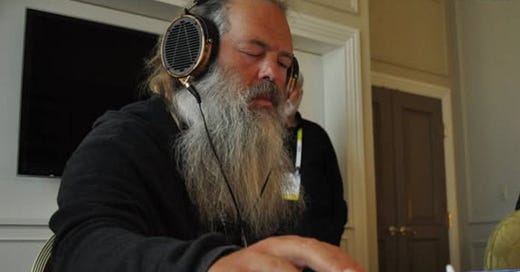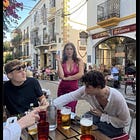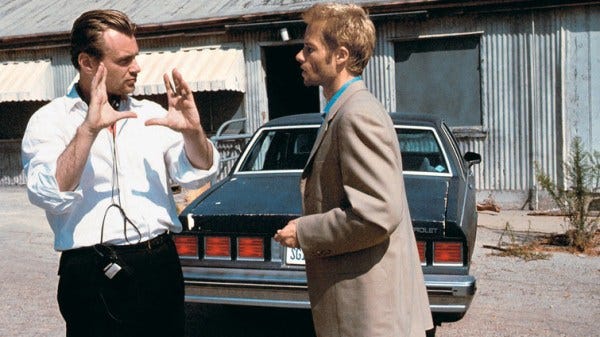The Next Great Artist Will Be an LLM
Why your favorite content and works of art will be AI generated
What makes somebody an artist?
Is it their paint brush collection? The loft in Soho? A middling drug addiction?
The ability to create something out of nothing?
These are (mostly) nice things, but to be an artist, you only need:
The willingness to create
The right taste to know what will resonate with people.
For most of human civilization even if somebody had these qualities, their chances of being an artist were low. Leisure time is a relatively new concept that only a few generations, beyond the very wealthy, could benefit from.
Even if you had free time, most art forms were not accessible, because of high costs and barriers to adoption. As expertise became more widespread and advances in technology (water colors, cheaper instruments, editing software, etc.) permitted more people to participate and discover, these art forms evolved.
In any domain, as more participants enter, competition ensues leading to better products. If more people participate in art creation, it will get better.
AI and Large Language Models (LLMs), will allow many more people to participate. While most people are focusing on how AI will change the future of work, not enough attention is being paid to how it will create a new artistic renaissance.
If you don’t read another word of this article, let this be your takeaway: LLMs will do more to lower barriers and encourage more participation than any previous innovation, which will increase the quantity and quality of art.
Find out why in this week’s article.
(Click here for a primer on how LLMs work, Why you should be using them and How it will change The Future of Work )
But first, make sure to hit the Subscribe button below to join the nearly 1,000 Subscribers that get articles like these, delivered directly to their inbox.
If this week’s article does not interest you, please check out some other recent ones:
The Rise in Leisure/Free Time
Leisure is a new concept. As late as the early 20th century, the average life expectancy was between 50-60 years old, meaning you didn’t really retire. You worked until you died if you weren’t killed sooner in battle, nicking your finger on a rusty spoon or during a hunting accident at the hand of a wild boar.
Those that didn’t die young, had very little time beyond work, household chores, childcare and sleep. As such, free time in most countries was really only available for the very wealthy, which numbered very few.
This lack of leisure time meant art creation was limited to full time professional artists, which there also weren’t many of. Even back in those days, the average artist was probably a starving one, and not the kind that secretly gets their rent and credit card paid off by their patrons, also known as mom & dad.
There was only tens of thousands professional artists in Western Europe during the 16th century. This didn’t meaningfully change until the late 19th and early 20th century, when this moved closer to 500,000 - 1,000,000. The big jump really happened in the late 20th century, due to the emergence of modern creative industries (film, radio, recorded music, television) which caused an exponential rise. In the U.S. alone, the number of professional artists jumped from ~750,000 in 1970 to ~1.7 million by 1990. In 2025, there are ~10 million professional artists in North America and Europe.
When you consider amateur and hobbyists, this number is way higher. According to the National Endowment of the Arts, in 2022, >52% of U.S. adults reported personally creating or performing some type of art (painting, music, writing or crafts) in the past year. It was a similar rate in Europe. This only includes one instance of art creation within a year, so it’s not much but it does demonstrate, many people at least occasionally participate in the art creation process. Due to the increase in life expectancy, leisure time and relative wealth, all of this makes sense.
Now you might be thinking, “Ok Ben, you’ve convinced me more people participate in art than they did 100 years ago. Good job. So what?”. This matters because, if more people have the time, willingness and tools to create art, more art will follow.
New Artist Formula = Taste + Willingness
“If you had one shot, or one opportunity. To seize everything you ever wanted in one moment. Would you capture it or just let it slip?” — Marshall Mathers (Eminem)
Not long ago, many artistic fields were structurally inaccessible. Few had access to professional equipment, teachers, or the opportunity to showcase their talent. Despite what older people say, art today is better than it ever was. Of course, there were exceptional artists from every century that would rival anyone today but never before has there been such variety of works and the ability to more easily discover them. Citizen Kane and Casablanca are incredible films, among the best ever, but compare other works from that era against the last 40 years of cinema, and it’s clear modern films are better. This is because of technology.
Before Oppenheimer, Tenet, Inception or The Dark Knight, Christopher Nolan spent most of the 1990’s working a full-time job at a corporate video production company, shooting training videos and industrial films. He would free lance doing camera work, editing, and small-scale production gigs.
On weekends with a group of friends and no money, he would shoot films on a 16mm camera and DIY lighting, this produced Following (1998), his first feature which cost about $6,000 to make. It managed to get into film festivals where it impressed critics and potential investors. On the heels of this success, he pitched his next project, Memento. The film got financed and made which cementing Nolan’s place in Hollywood and it is considered one of the best films of its era.
I can write an entire article on Christopher Nolan films, and I’ve come close but I use this anecdote to point out, that Nolan was only able to make Memento because he had made Following. Without the equipment, sound and editing tools available to him at the time, he wouldn’t have been able to. Nolan was able to showcase his talent because the technology made it possible to create an inexpensive proof of concept.
Technology reduces the friction standing between the idea inside an artists mind and the canvas. Despite the constraints, Nolan had to work with, he could still make a good film. As film studios increasingly gave him more budget and creative control, he could attempt more ambitious projects, which resulted in masterpieces.
Now consider this. What if anybody could produce a film, song or work of art without needing the resources of a film studio, music label or publishing house? If everybody had access to a world-class teacher/mentor that was available 24/7 at a negligible cost? Do you think we would have more Christopher Nolan level talents, or less?
Why AI will create great art
“Are you ever going to come back from the dark side and shoot on film again?” Christopher Nolan
“When you start writing your scripts in pencil.” Steven Soderbergh
The Gutenberg press, developed in 1440, didn’t just invent mass printing, it enabled mass literacy. By dropping the cost of books by over 90%, it made reading and writing accessible to the public. Within a century, the number of literate people in Europe increased nearly a hundredfold.
Stories existed before then, of course but outside wealthy elites, books were rare, expensive, and regionally locked. The printing press removed that friction and reshaped science, literature and culture forever.
AI can have a similar effect. For starters, it gives anyone access to knowledge, guidance, and feedback once reserved for formal training or elite mentorship. Ask ChatGPT how to become a better painter, and it will give you instructions on par if you went to a beginner or intermediate art class.
If you tried this for other disciplines, I’m sure you would get similar results but beyond access to information and getting feedback, AI goes even further. If you haven’t played with Sora, Midjourney or some of these other photo or video generation tools, take a look. Today their functionalities are still somewhat limited, but soon enough it will be realistic to believe you can create an entire feature length film, similar to Following, just using prompts.
With zero budget, you could create a proof of concept for the film you want to make. If you were a talented enough, maybe you could create an entire film, good enough for distribution this way. Imagine how many more people could participate in the film industry if they didn’t need to worry about costs, location, acting talent, lighting etc. This wouldn’t replace the epic films done by professionals such as Nolan, Tarantino and others but before long, I expect even Hollywood directors will be using these tools to shoot stunts too expensive or difficult to film in real life.
If you are still reading this, I imagine you might disagree with some of this. That’s fine. We are still in the early days of LLMs and AI adoption. You might argue that AI will never produce great art because it doesn’t feel. It’s not conscious or sentient. Perhaps you are right, that feelings are necessary and you need to live through heartbreak or obsession to make something beautiful. Rick Rubin and others might say as much. Many artists are emotional, erratic, deeply sensitive people.
This might have been a good argument but the inability for AI to feel is irrelevant. It’s the person prompting the AI that matters. You can give any person a camera, it doesn’t mean they will take a good photo or shoot a decent film. If a person with taste and the desire to create, uses AI and it will only enhance their work.
Are you still skeptical? Ok. Let’s assume you don’t believe that modern film editing software, sound & beat packages, autotune software, spellcheck and other tools have helped artists create better art. Think about how the internet reshaped the way we discover art. Substack didn’t exist a decade ago, now you’re reading this newsletter here. Justin Bieber, Billie Eilish, Post Malone and countless other artists were discovered on platforms such as YouTube, MySpace, Spotify and SoundCloud. Some probably could have made it without them, but I expect many wouldn’t have.
This is why the notion that AI cannot create art is a flawed premise. All modern art is created or supported by technology and not only have these tools democratized these art forms, they have increased the quality. AI will do more to reduce friction, permitting anybody to create art. Which is why the next generation of great artists, will be those that learn to combine their unique taste and creativity, with the possibilities enabled by AI.
Thank you for reading. If you liked this article please Subscribe below. Each week I publish an article on a wide range of topics from business, books, current events or anything on my mind.










